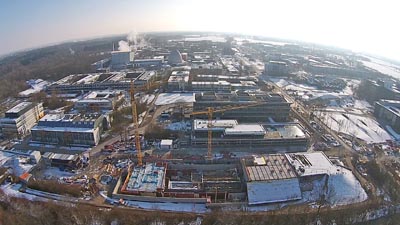(Bruehl, June 27, 2016)
At the Centre for Advanced Laser Application (CALA)
on the joint Munich Research Campus of Ludwig Maximillian University (LMU) and Technical University (TUM), researchers will develop laser-based technologies to help improve the cure rate of cancer patients. CALA will rely on a central control solution from HIMA Paul Hildebrandt GmbH.
The concept, design, programming, installation, commissioning and subsequent service
of CALA’s central control system will be implemented by HIMA. A HIMatrix F35 controller with 23 remote IOs comprise the high-level control system. That system will connect with subordinate systems and control many operational procedures. In special cases, such as during fire alarms or power outages, it will initiate the required measures and provide monitoring.
Complete solution with maximum stability
The HIMA solution is based on a simple and compact structure that ensures maximum stability and economical operation. Its modular structure makes the system highly flexible and able to be adapted to new conditions associated with forthcoming CALA extensions.
Construction at CALA
is scheduled to be completed in August 2016. Large-scale scientific apparatus will be set up by the end of 2017. The CALA scientific building and large equipment infrastructure - an investment of nearly €70 million - will extend in core areas the research possibilities of the Munich Centre for Advanced Photonics (MAP) cluster of excellence. In addition to supplying the hardware components, HIMA will develop the complete software architecture.
Three pillars in the fight against cancer
CALA’s three-pronged innovative strategy for combating cancer is based on: 1) broadband infrared radiation for early-on detection of cancer cells in blood and compounds in the breath, 2) the use of brilliant X-rays for precise detection of primary tumors and 3) localized, high-precision, laser-driven radiation and particle therapy.
|
|

The Centre for Advanced Laser Applications (CALA)
is under construction in Garching near Munich.
Completion is scheduled for August 2016
.
Photo: © Thorsten Naeser |